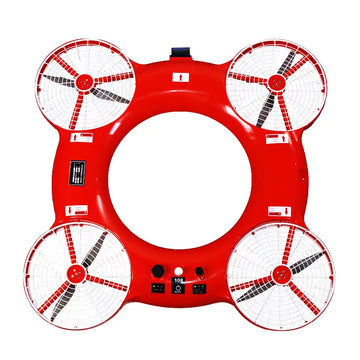In today’s world of rapidly advancing technology, drones have transformed everything from photography to agriculture—but do lifeguards use drones? The short answer is: yes, and increasingly so. From crowded beaches to remote lakes and disaster zones, lifeguard drones are becoming a critical tool in water rescue operations.
Why Are Drones Being Used in Lifeguard Operations?
Traditional lifeguard methods—such as swimming out with flotation devices or using boats—are limited by time, distance, and human stamina. In contrast, drones provide:
-
Rapid response over long distances
-
Real-time video transmission for situation assessment
-
Payload delivery such as life buoys or flotation gear
-
Minimized risk to rescue personnel
For these reasons, forward-thinking lifeguard agencies and emergency response teams are integrating drones into their rescue strategies.
🚁 How Are Drones Used by Lifeguards?
Here are several ways drones assist lifeguards:
-
Search and Locate: With onboard cameras and thermal sensors, drones quickly locate victims even in murky water or crowded scenes.
-
Flotation Delivery: Equipped with flotation devices, drones like the JX-6A can drop life-saving gear directly to the victim within seconds.
-
Surveillance: Drones monitor large beach areas for rip currents, unsafe swimming, or wildlife threats (like sharks).
-
Disaster Response: In flood zones, drones assist in locating stranded individuals on rooftops or trees.
✅ Real-World Example: The JX-6A Rescue Drone
The JX-6A Air-Water Rescue Drone, developed by DIDIOK MAKINGS, is one of the most advanced lifeguard drones on the market. It’s built specifically for lifeguard and emergency water rescue operations and features:
-
190N flotation capacity
-
Force 6 wind resistance
-
One-button takeoff and return
-
720P real-time video streaming
-
Takeoff and landing on water surface
Lifeguard stations, coast guards, and marine police across Asia are beginning to adopt the JX-6A to respond faster and save more lives.
🌍 Who Is Using Lifeguard Drones Around the World?
-
Spain’s beaches have pioneered drone deployments with proven life-saving results.
-
Australia has tested drones with shark detection and flotation drop systems.
-
China, with its vast coastline and flood-prone zones, is integrating smart rescue drones into government emergency management.
These examples show that drones are no longer experimental tools—they are life-saving assets.
🔮 The Future of Lifeguard Work: Aerial + Human Synergy
While drones will not replace human lifeguards, they will act as vital force multipliers, enabling:
-
Faster victim reach
-
Wider area coverage
-
Safer working conditions for first responders
The result? More lives saved with less risk.
📌 Conclusion: Do Lifeguards Use Drones? Yes—and the Trend Is Growing
As water-related emergencies become more frequent due to climate change and overcrowded recreational zones, the integration of drones in lifeguard work is inevitable and essential. If you’re in lifesaving services, emergency management, or public safety, it’s time to explore lifeguard drones like the JX-6A.
📩 Want a demo or pricing information?
Contact us at rainzhao@didiok.org or visit https://didiokmaking.com
WeChat:CHAQU0





